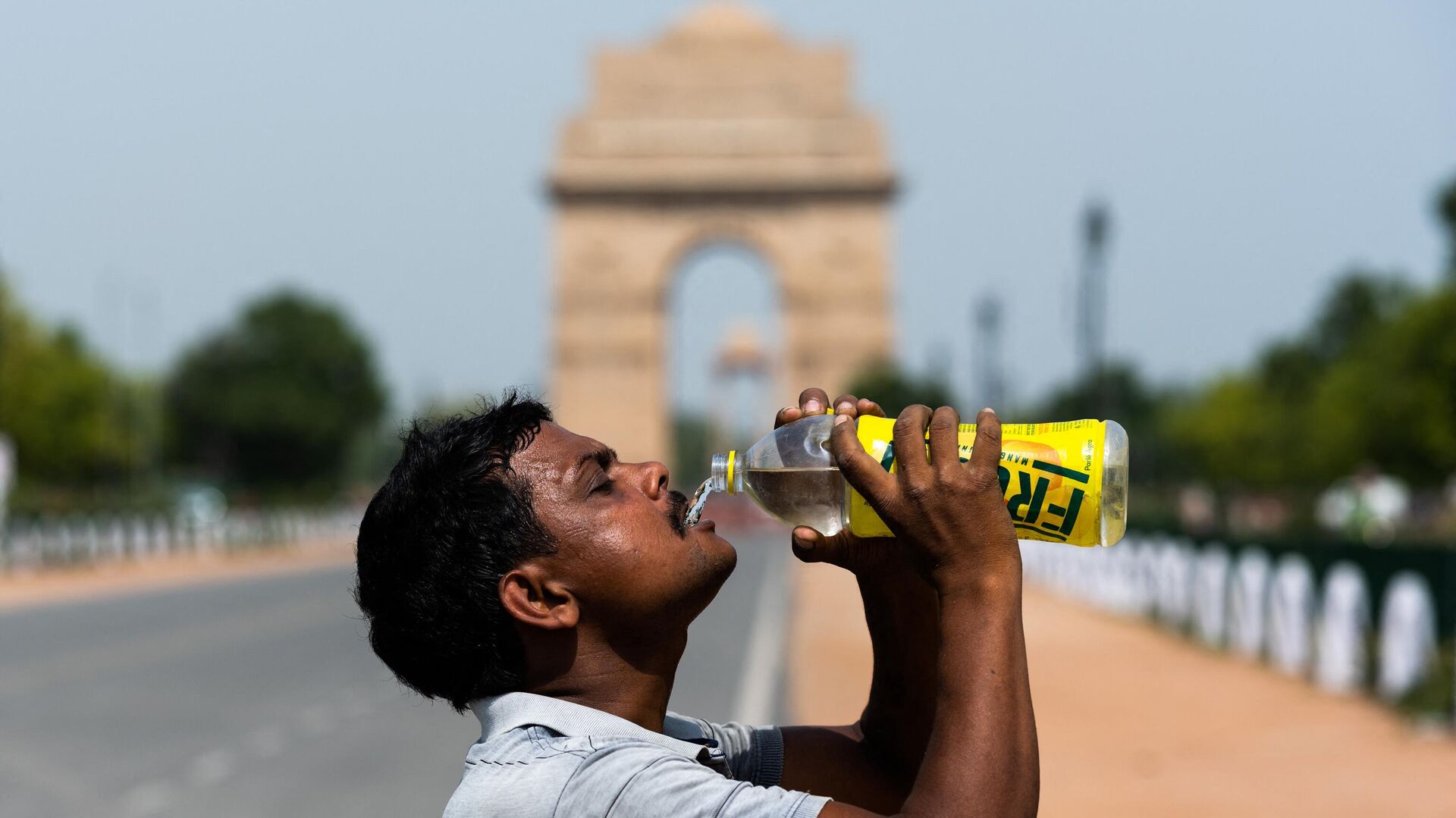Why is India Suffering Heatwaves?
15:57 20.04.2023 (Updated: 17:12 20.04.2023)

© JEWEL SAMAD
Subscribe
Scientists have warned that over 90% of India is threatened by the dangerous impact of heatwaves, with abnormal temperatures of over 40°C — not typical for April.
The increasing frequency and intensity of heatwaves in India are a clear sign of the impact of climate change.
According to the Indian Meteorological Department (IMD), 2019 was the seventh hottest year in India since 1901. Hot temperatures in South Asia are a cause for concern as they pose significant threats to human health, agriculture, and the economy.
This April, India, as well as large parts of South and Southeast Asia, is suffering extreme heat, with the maximum temperature recorded in Odisha's Baripada district — 44°C, which is about five degrees above normal for many parts of India.
Heatwaves are becoming a common phenomenon in India mostly due to climate change: however, there is a whole range of other factors, including the location of the country close to the equator, lack of green cover, socio-economic issues, like poverty, and human impact on the environment, including traditional agricultural practices, urbanization, amonf other things.
What is really dangerous about heatwaves is that they can lead to the formation of ground-level ozone, which is a powerful greenhouse gas. This, in turn, can contribute to further climate change, leading to a vicious cycle that exacerbates the effects of extreme heat.
Are Heatwaves Common in India?
Extremely hot temperatures are quite common in India, especially during the summer months from April to June.
Temperatures can soar as high as 45-50 degrees Celsius in several parts of the country, leading to severe health issues and even fatalities.
The frequency and intensity of heatwaves have been increasing in recent years due to climate change and other factors. It is essential to take necessary precautions during them, such as staying hydrated, avoiding direct sunlight, and staying in cool places.
Why is India Having Heatwaves?
India experiences heatwaves due to a combination of factors, including its location near the equator, intense solar radiation, dry air, and the delayed arrival of monsoon rains.
Below are some of the underlining reasons behind India getting warmer.
Global warming. The rise in temperature has been observed due to the increase in greenhouse gases, such as carbon dioxide, methane, and nitrous oxide, in the atmosphere. These gases trap the sun's heat, leading to a rise in temperature.
Urbanization. With the growth of cities and towns, there has been an increase in concrete structures, which absorb and retain heat. The urban heat island effect is a phenomenon where cities are hotter than surrounding rural areas due to the concentration of heat-absorbing structures. This effect is a significant contributor to heatwaves in urban areas of India.
Lack of tree cover: trees absorb carbon dioxide from the atmosphere, which helps regulate the temperature. They also provide shade and evaporative cooling, which helps to keep temperatures down.
Deforestation reduces the amount of carbon dioxide that can be absorbed by trees, contributing to higher greenhouse gas levels in the atmosphere. However, with the increase in deforestation and urbanization, the number of trees has decreased significantly, leading to a rise in temperature.
Human-induced climate change is also a contributor to rising temperatures in India. Climate change is caused by human activities such as burning fossil fuels, deforestation, and industrial processes, which release greenhouse gases into the atmosphere. These gases trap heat leading to a rise in temperature, which, in turn, causes heatwaves.
Poverty is another factor that aggravates the danger of heatwaves in India. Many people in India live in poverty and do not have access to air conditioning or adequate shelter from the heat. This puts them at a higher risk for heat-related illness and death. According to a study conducted by the Indian Council of Medical Research, heatwaves have killed over 17,000 people in India over the past decade. The majority of these deaths were among the elderly and the poor.
Impact of Heatwaves in India
The impact of heatwaves in India is severe, leading to loss of life, damage to crops, and economic losses. The elderly, infants, and people with pre-existing medical conditions are the most vulnerable to the effects of these drastic weather conditions.
Prolonged exposure to high temperatures can result in heat exhaustion, heatstroke, and even death.
To mitigate the impact of heatwaves, it is essential to take measures to reduce greenhouse gas emissions, promote afforestation, increase the use of renewable energy sources, and implement sustainable urban planning. It is also essential to increase awareness among the people about the dangers of extremely hot weather and the importance of taking precautions during hot weather.


